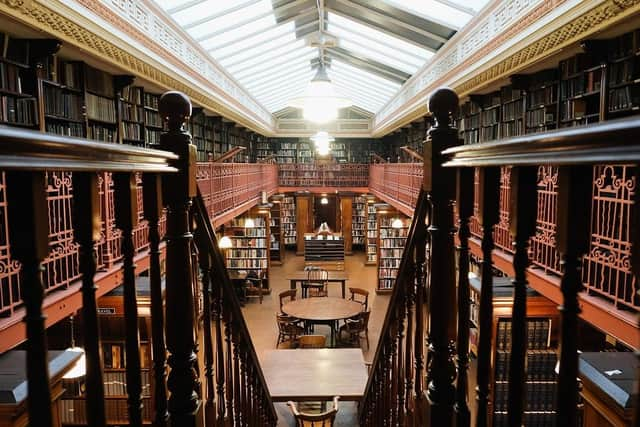Leeds Library: History behind Yorkshire’s oldest surviving subscription library and the oldest cultural hub in Leeds
The library moved two times before relocating to the purpose built premises on Commercial Street, Leeds on July 4, 1808.
The building is a grade II listed Greek Revival building and was designed by Thomas Johnson, the likely architect who worked on the redesign of the south west section of Temple Newsam.
Advertisement
Hide AdAdvertisement
Hide AdAs of June 2020, the library gained more than 1,000 members who pay an annual subscription and has an estimate of more than 140,000 titles with 1,500 books added to the collection every year.


History of Yorkshire’s oldest library
The library was founded in 1768 and is considered the oldest cultural hub in Leeds.
It’s a subscription library, financed by private funds whether from membership fees or endowments, and is the oldest of its kind in the British Isles.
While public libraries are open to all, subscription libraries are often restricted to members but access rights can also be given to non-members, for example for students.
Advertisement
Hide AdAdvertisement
Hide AdLeeds Library is a flourishing hub for creativity and ideas and examples of its founding members were doctors, clergymen, industrialists and businessmen, along with members of The Royal Society, Reverend Dr Joseph Priestley.
It was originally housed in a back room at Joseph Ogle’s bookshop on Kirkgate and he became the first librarian.
His daughter, Mary, took over when he died in 1774 and was the librarian for 37 years before she died in 1813. During this time, the library became very successful that it outgrew its modest location and moved to the Rotation Office on Kirkgate, then a few years later, it moved again to its current premises on Commercial Street in 1808.
The Grade II listed building is an example of a rare surviving Georgian public library.
Advertisement
Hide AdAdvertisement
Hide AdMembers can access daily newspapers, magazines, films on DVD, music and numerous archives, academic journals and databases.
The library became a charity in 2008 and was the setting for most of Frances Brody’s 2014 book Death of an Avid Reader.
In modern times it has become a welcoming space for creatives with a variety of broad-ranging programmes of events including talks, workshops, book launches or live theatre.
Comment Guidelines
National World encourages reader discussion on our stories. User feedback, insights and back-and-forth exchanges add a rich layer of context to reporting. Please review our Community Guidelines before commenting.
